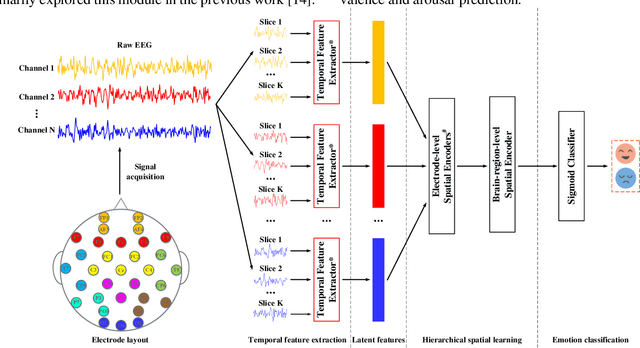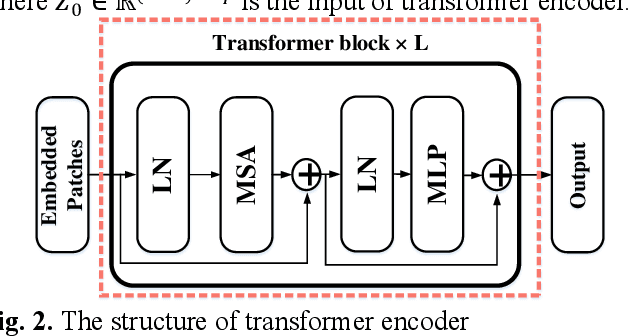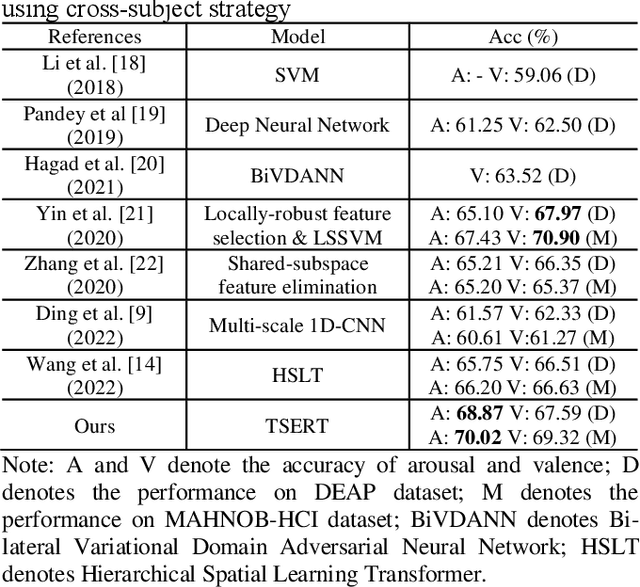Temporal-spatial Representation Learning Transformer for EEG-based Emotion Recognition
Paper and Code
Nov 16, 2022



Both the temporal dynamics and spatial correlations of Electroencephalogram (EEG), which contain discriminative emotion information, are essential for the emotion recognition. However, some redundant information within the EEG signals would degrade the performance. Specifically,the subjects reach prospective intense emotions for only a fraction of the stimulus duration. Besides, it is a challenge to extract discriminative features from the complex spatial correlations among a number of electrodes. To deal with the problems, we propose a transformer-based model to robustly capture temporal dynamics and spatial correlations of EEG. Especially, temporal feature extractors which share the weight among all the EEG channels are designed to adaptively extract dynamic context information from raw signals. Furthermore, multi-head self-attention mechanism within the transformers could adaptively localize the vital EEG fragments and emphasize the essential brain regions which contribute to the performance. To verify the effectiveness of the proposed method, we conduct the experiments on two public datasets, DEAP and MAHNOBHCI. The results demonstrate that the proposed method achieves outstanding performance on arousal and valence classification.
 Add to Chrome
Add to Chrome Add to Firefox
Add to Firefox Add to Edge
Add to Edge